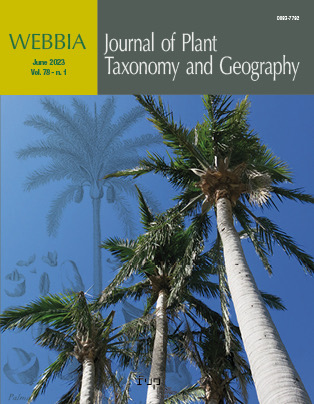The Critically Endangered Haitian endemic palm Attalea crassispatha (Arecaceae) and its living collections in Fairchild Tropical Botanic Garden: Perspectives from conservation surveys and DNA microsatellite (SSR) data
Published 2023-05-14
Keywords
- Tropical islands,
- Biodiversity Hotspots,
- Conservation genetics,
- Greater Antilles
How to Cite
Copyright (c) 2023 Brett Jestrow, Michael Hass, William Cinea, Alan R. Franck, Joel C. Timyan, M. Patrick Griffith, Javier Francisco-Ortega

This work is licensed under a Creative Commons Attribution 4.0 International License.
Abstract
With only 24 plants located in the wild in 2017, the Haitian endemic Attalea crassispatha (Mart.) Burret (Arecaceae) is one of the major priorities for palm conservation in the Caribbean Island Biodiversity Hotspot and is the only member of the genus (~ 30 species) that occurs in the region. A project of ex situ conservation and field surveys published in 1994 involved Fairchild Tropical Botanic Garden (FTBG) as a major distributor of wild collected germplasm with other botanic gardens/institutions from South Florida and the tropics in 1989 and 1991. Part of this material was also grown in FTBG. Over 25 years after this conservation initiative was established, new field surveys were made in 2017 where the species occurs in Peninsule de Tiburon, southern Haiti. The number of living plants recorded in this new inventory was 24 (vs 25 reported in 1994). DNA microsatellite data (SSRs) were used to compare levels of genetic variation in the FTBG ex situ conservation collections and the wild. We found that the FTBG genotypes did not capture most of the already limited genetic diversity found in the wild. Cluster analyses based on Bayesian statistics recognized three major genetic groups in the wild, and three of them were found in plants occurring mostly in the northern slopes of Peninsule de Tiburon; in contrast, only two of the genetic clusters were predominant in the southern portion of this peninsula mostly in the Cavaillon area. Our results concur with those recently published based on Single-nucleotide polymorphisms (SNPs) molecular markers for ex situ collections of this palm species conserved in five botanic gardens/research institutes.


